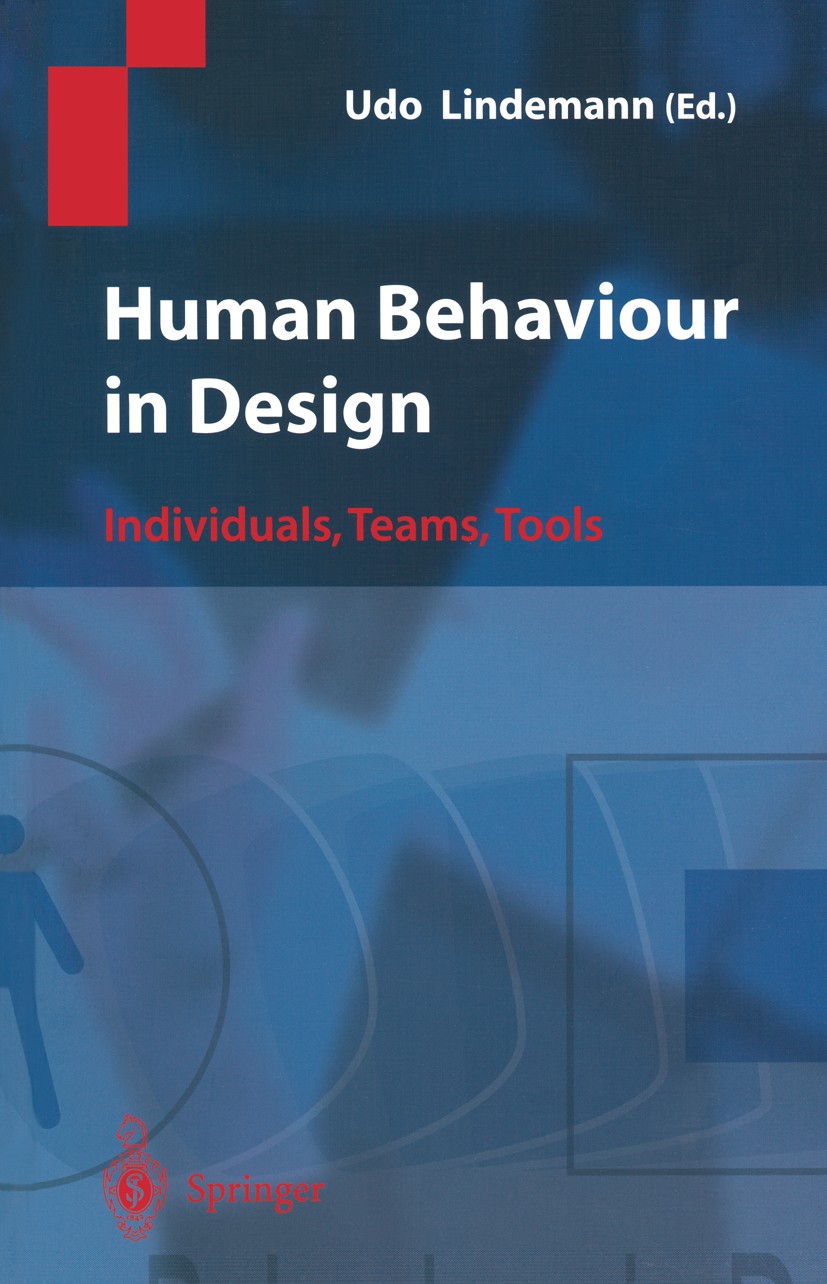| 書(shū)目名稱 | Human Behaviour in Design | | 副標(biāo)題 | Individuals, Teams, | | 編輯 | Udo Lindemann | | 視頻video | http://file.papertrans.cn/429/428995/428995.mp4 | | 概述 | Only book available that deals with the question of how the behaviour of the designer influences the design process.Includes supplementary material: | | 圖書(shū)封面 |  | | 描述 | .Human Behaviour in Design. addresses important aspects of creative engineering design. The main topics are the interaction between two complementary modalities - "image" and "concept", internal and external components of design thinking, and design strategies - both for individual designers and design teams. The goal is to improve and evaluate tools and methods that support design. Although this book is the outcome of an international workshop held in March 2003, it is more than just a collection of its contributions. The papers are arranged into three main topics: Individual Thinking and Acting; Interaction Between Individuals; Methods, Tools and Prerequisites. There are summaries of the discussions of the respective topics written by the chairpersons, conclusions, and an outlook to future issues in design research.. | | 出版日期 | Book 2003 | | 關(guān)鍵詞 | calculus; conceptual design; creativity; decision making; design methods; design process; design theory; en | | 版次 | 1 | | doi | https://doi.org/10.1007/978-3-662-07811-2 | | isbn_softcover | 978-3-642-07366-3 | | isbn_ebook | 978-3-662-07811-2 | | copyright | Springer-Verlag Berlin Heidelberg 2003 |
The information of publication is updating

|
|
 |Archiver|手機(jī)版|小黑屋|
派博傳思國(guó)際
( 京公網(wǎng)安備110108008328)
GMT+8, 2025-10-11 03:33
|Archiver|手機(jī)版|小黑屋|
派博傳思國(guó)際
( 京公網(wǎng)安備110108008328)
GMT+8, 2025-10-11 03:33


